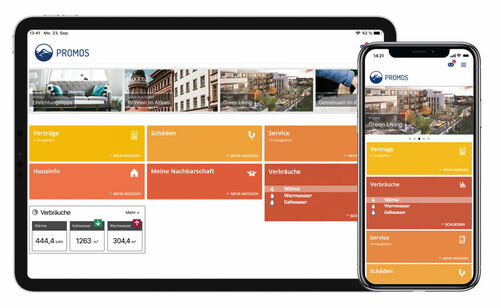Energy saving tips for tenants
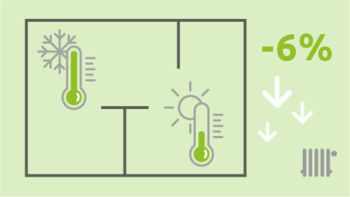
Choose the right temperature for each room! You’ll need a couple more degrees to feel cosy in the living room than in less used rooms. The ideal temperature here is 20–22 degrees, which corresponds to a setting of 3 or 4 on the thermostat. Every degree less reduces your consumption by about 6 percent.

Air in the heating pipes increases energy consumption. So if it “gurgles”, immediately let air out of the hot radiator with a vent valve! But with central heating, it’s best to talk to your landlord beforehand.
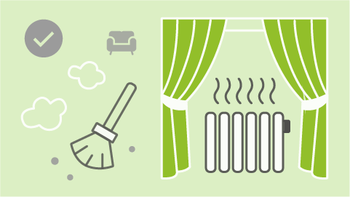
Give your radiators room! To ensure that the heat spreads evenly throughout the room, make sure radiators are not hidden behind curtains or furniture. Cladding, lint and dust can also reduce the heat output. Tip: Around 20 cm should be enough.
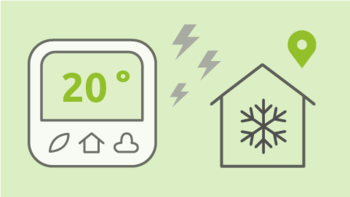
Turn the thermostat down if you’re not home! Lowering the temperature saves energy. If you don’t want to operate each valve individually, you can also use programmable devices, which can be installed quickly and easily even in a rental apartment.

If you’ve already installed programmable thermostats, you can also use an intelligent time control! This enables you to save by lowering the temperature at certain times like during the night when you’re asleep or while you’re away on holiday.
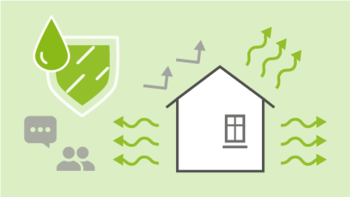
Insufficiently tight windows and exterior doors not only cause unpleasant drafts, but also contribute to the loss of heat from your home. Seals can often work wonders here. Roller shutter boxes are also a common weak point. It’s best to talk to your landlord about this!

It’s common knowledge that rarely used rooms don’t need to be heated as much. So keep the doors to your rooms closed! Roller shutters can also improve the insulation of your windows when they’re closed at night, helping you save energy.
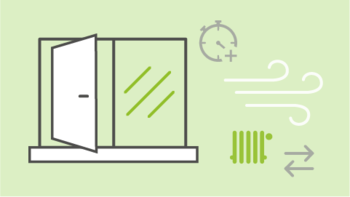
Our selection wouldn’t be complete without another energy-saving tip: be sure to ventilate – but do it right! The rule of thumb is to briefly open the window wide multiple times a day rather than leaving the window tilted for long periods. This quickly replaces the air in the room, and the radiator only has to warm up the fresh air.
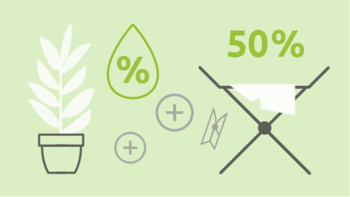
And think about the humidity! Slight humidity of 40–60 percent reduces the need for heating since humid air feels warmer than dry air. Regular ventilation, drying clothes, plants and, of course, humidifiers all contribute to a pleasant indoor climate.
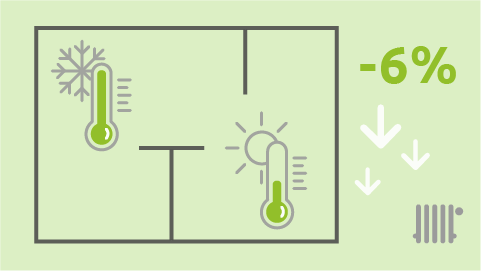 |
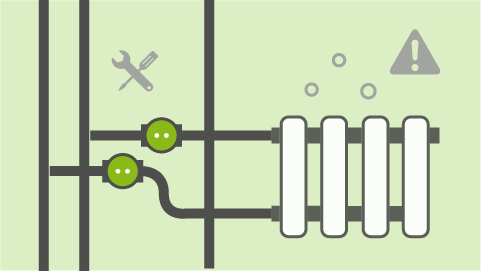 |
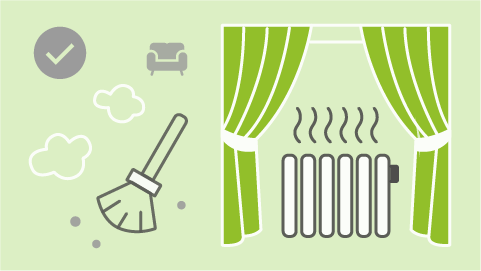 |
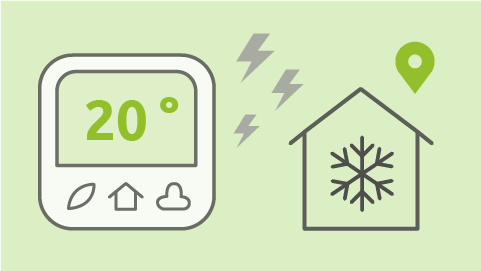 |
 |
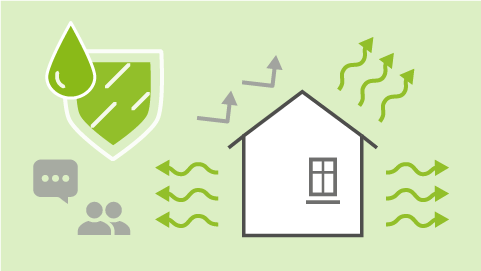 |
 |
 |
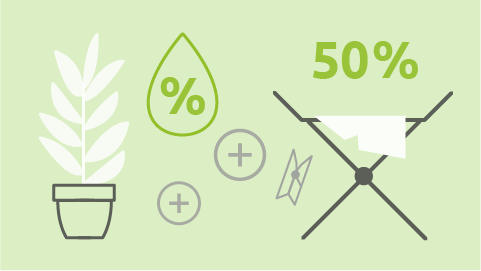 |
Energy savings made easy
- Finding the ideal room temperature
Heating costs can be saved by choosing the right room temperature. Lowering the temperature when you’re not home and correctly adjusting your thermostats will make it easier for you. - Balance of ventilation and heating
If you ensure proper sealing, closed doors and proper ventilation, you’ll use less heating at the end of the day. And humidity also contributes to a pleasant indoor climate. - Don’t forget about water consumption
With little effort, you can reduce your household water consumption and thus use significantly less energy. The economy functions on your household appliances and the right taps can help.
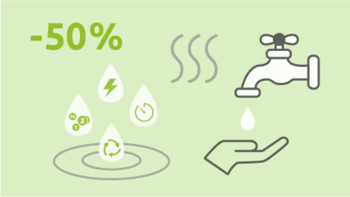
A dripping tap is annoying. And it wastes water. Repairing it or even replacing it with an energy-saving model therefore reduces not only your water consumption, but also the energy consumed for heating. Water-saving taps can additionally reduce the flow of water by up to 50 percent.
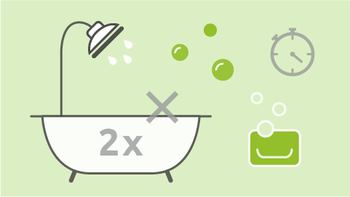
By the way: for a full bath, you need about twice as much hot water as for a shower. So it is indeed better to take a shower. And remember, water doesn’t have to flow constantly. Shut off the tap while washing your hands or brushing your teeth!
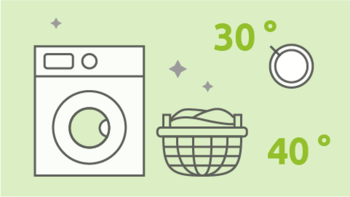
Take advantage of the energy-saving functions on your household appliances! Dish washers and washing machines usually have functions like this designed to help you use significantly less water and energy. For most washing machine cycles, 30 or 40 degrees is sufficient to still give you a clean result.
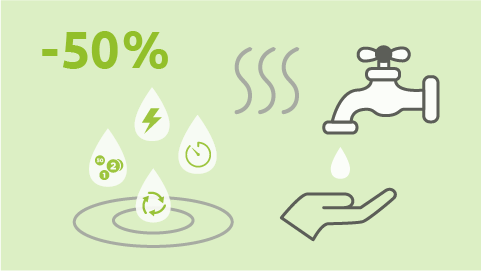 |
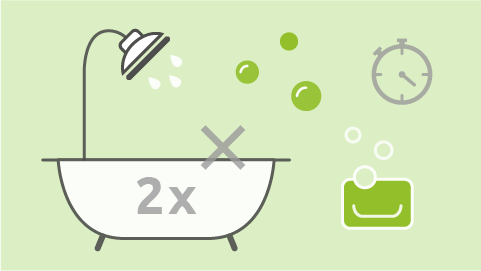 |
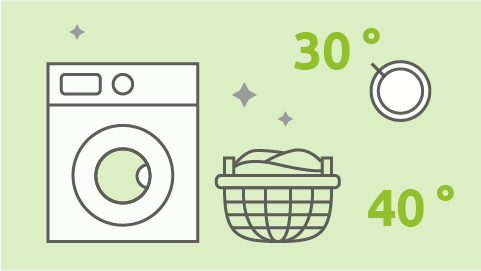 |
Energy Efficiency Directive
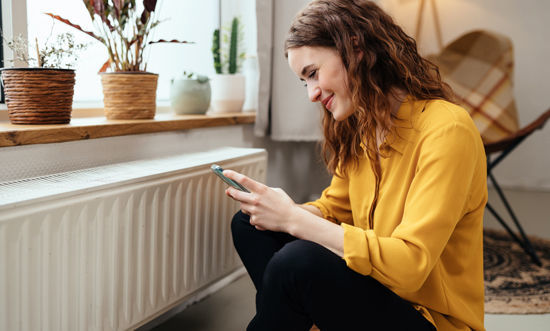
What tenants need to know about the EED

Protecting the climate with the tenant app
Does your landlord already use the tenant app or the web portal powered by easysquare to provide tenants with regular, transparent information about current consumption? And would you like to use this digital service now too? Then perhaps you have already received post from your landlord. Read on to discover how easy it is to start using your housing company’s tenant app – assuming, of course, your landlord uses the digital applications from easysquare.
